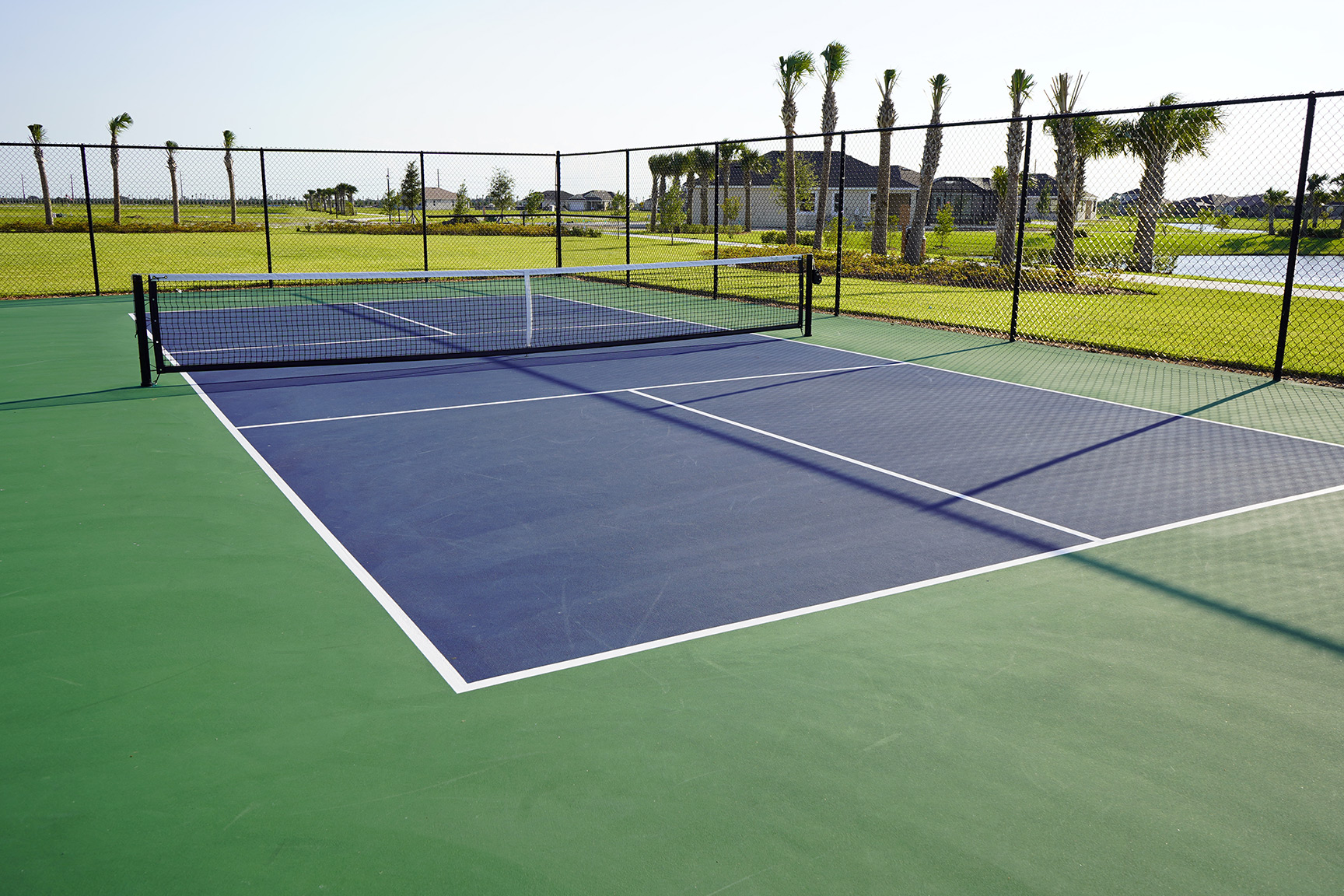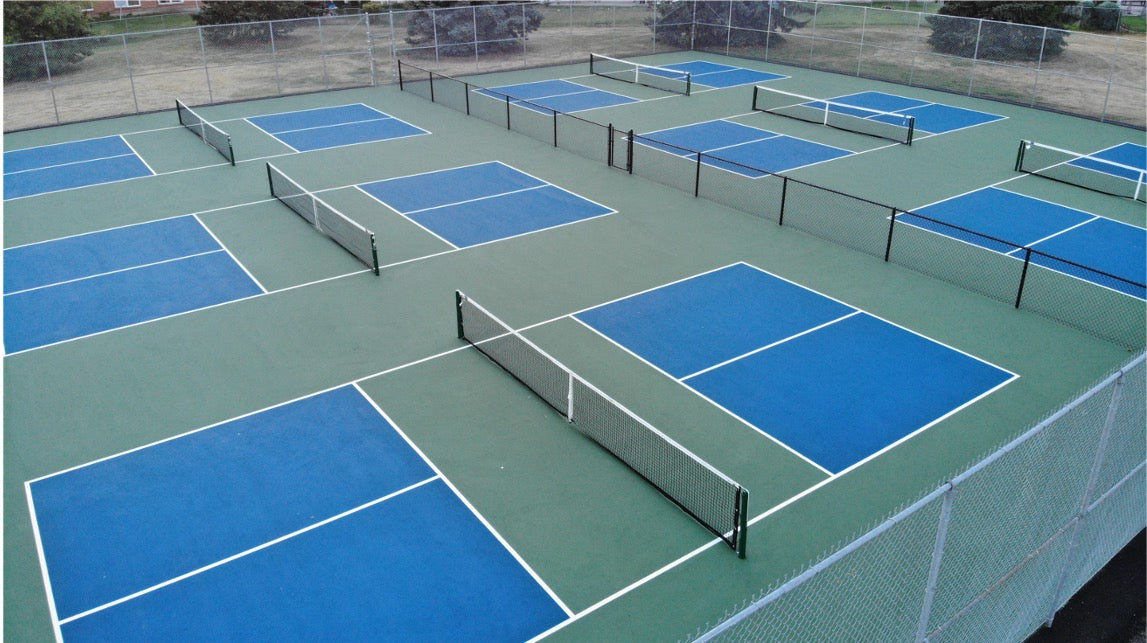Comprehending the Timeline for Your Pickleball Court Construction Project
Comprehending the Timeline for Your Pickleball Court Construction Project
Blog Article
Boost Citizen Involvement With Community-Driven Pickleball Court Projects
The introduction of community-driven pickleball court projects provides a distinct possibility to promote regional engagement and strengthen area connections. By proactively entailing residents in the preparation and execution phases, such initiatives not only produce recreational spaces however also promote a common sense of possession. Comprehending the steps to start these tasks, including efficient stakeholder interaction and resource allowance, is essential. However, the genuine concern remains: how can these grassroots efforts be strategically carried out to make sure sustainability and inclusivity in varied neighborhoods? Checking out successful study might give the insights needed to answer this critical issue.
Importance of Community Involvement
Neighborhood engagement is a vital aspect in the successful growth of pickleball court jobs, as it fosters a sense of possession and cumulative responsibility amongst citizens. When neighborhood participants are proactively entailed in the planning and implementation phases, they are most likely to support for the job's long-lasting success. Engaging stakeholders such as local players, households, and recreational groups guarantees that the centers fulfill the varied needs and choices of the neighborhood.
Moreover, area interaction grows a supportive atmosphere where homeowners really feel encouraged to add their ideas and resources. Pickleball court construction. This joint method can bring about innovative solutions that boost the layout and performance of the courts, making them a lot more attractive to a wider audience. Furthermore, including citizens in decision-making procedures can enhance social ties, advertising inclusivity and unity within the area
The visibility of community support for a pickleball task can likewise play an essential duty in protecting funding and authorization from neighborhood authorities. By demonstrating a shared dedication to leisure growth, communities can properly promote for sources and plan changes that favor the facility of pickleball courts, ultimately enriching the regional culture and entertainment landscape.
Actions to Initiate a Task
Starting a pickleball court job calls for a systematic approach that constructs on the foundation of neighborhood interaction established in previous discussions. The very first step is to construct a task committee consisting of regional stakeholders, fanatics, and representatives from relevant organizations. This varied group ensures that numerous viewpoints are thought about.
Following, perform a needs assessment within the community. Surveys, focus groups, and public meetings can be efficient in assessing rate of interest and gathering input on possible court locations, preferred features, and organizing preferences. Following this, establish a project strategy detailing duties, goals, and timelines.
Once the strategy is in area, engage with regional authorities to recognize zoning laws and any kind of required licenses. Interacting transparently with the area throughout this process is vital, as it fosters count on and encourages additional engagement.
In addition, arranging neighborhood events can assist keep momentum and excitement. These events can offer as platforms for additional discussion and aid to reinforce neighborhood connections. Record every step taken and maintain thorough records, as this will be valuable for future phases of the project, including financing and source acquisition.
Funding and Resources Available
Safeguarding financing and sources for a pickleball court job is usually an essential step that can determine the task's feasibility and success. Numerous methods exist for getting financial backing, ranging from public financing to exclusive sponsorships. City government grants, usually focused on promoting neighborhood health continue reading this and wellness and recreation, can give substantial sponsorship for such efforts.
Along with federal government resources, not-for-profit companies and foundations often provide gives especially for sporting activities and community development projects. Engaging neighborhood services as sponsors can also be a rewarding approach; lots of business aspire to buy area efforts that enhance their business social responsibility account.
Crowdfunding platforms have become a viable option for grassroots fundraising, allowing area participants to add directly to the job. This method not just increases funds however also promotes a sense of possession among participants.
Style and Planning Factors To Consider
Efficient layout and planning are fundamental components of any type of successful pickleball court project adhering to the purchase of funding and resources. A detailed evaluation of the proposed place is vital; this includes examining ease of access, proximity to existing community amenities, and the possibility for presence and interaction.
The layout of the court need to follow official dimension specs while thinking about the bordering atmosphere. Including features such as seating, shade frameworks, and ideal lights can significantly boost player experience and viewer satisfaction. Products selected for the court surface area should focus on sturdiness and safety and security, with alternatives like acrylic or asphalt offering ideal efficiency.
Including community participants in the design procedure promotes a feeling of ownership and makes sure that the facility satisfies regional needs - Pickleball court construction. This can be achieved through public assessments and studies, allowing stakeholders to express their choices and problems
Sustainability must likewise be a priority; incorporating environment-friendly products and techniques can add to long-term practicality. Creating a maintenance strategy to make certain the court stays in exceptional condition will certainly support recurring area involvement and participation in pickleball tasks.

Success Stories and Instance Research Studies
Highlighting the transformative impact of community-driven initiatives, a number of success tales highlight exactly how collaborative efforts have actually led to the development of lively pickleball courts across various regions. One noteworthy example is the effort in a village in Florida, where citizens banded together to transform an underutilized tennis court right into a devoted pickleball facility. Via fundraising occasions and collaborations with local services, the community raised adequate funds to mount brand-new nets, resurfacing, and lines, eventually cultivating a lively hub for regional players.
Likewise, in a suburb of The golden state, a grassroots motion emerged to develop pickleball courts in a regional park. The job not only involved volunteers for building and construction however likewise included workshops to involve neighborhood participants in the sporting activity. Therefore, the courts became a centerpiece for social communication and fitness, drawing in gamers of all ages.
These situation researches resource exhibit how community-driven jobs can boost neighborhood engagement, promote exercise, and reinforce social bonds. By leveraging cumulative resources and enthusiasm, neighborhoods can effectively maintain and create pickleball facilities that serve diverse populations and promote a feeling of belonging.

Final Thought
By prioritizing stakeholder involvement throughout the preparation and execution phases, these initiatives can successfully resolve varied community needs. Eventually, such initiatives add to the makeover of public spaces into dynamic centers of physical fitness and social interaction, enhancing area connections.
The emergence of community-driven pickleball court projects presents a distinct chance to promote regional interaction and reinforce area connections.Area involvement is an essential component in the successful development of pickleball court jobs, as it promotes a sense of ownership and collective responsibility amongst homeowners. When area participants are proactively included visite site in the planning and implementation stages, they are more most likely to support for the task's long-lasting success.Starting a pickleball court job requires a systematic approach that constructs on the structure of neighborhood engagement established in previous conversations. The job not only involved volunteers for construction yet additionally included workshops to engage area participants in the sport.
Report this page